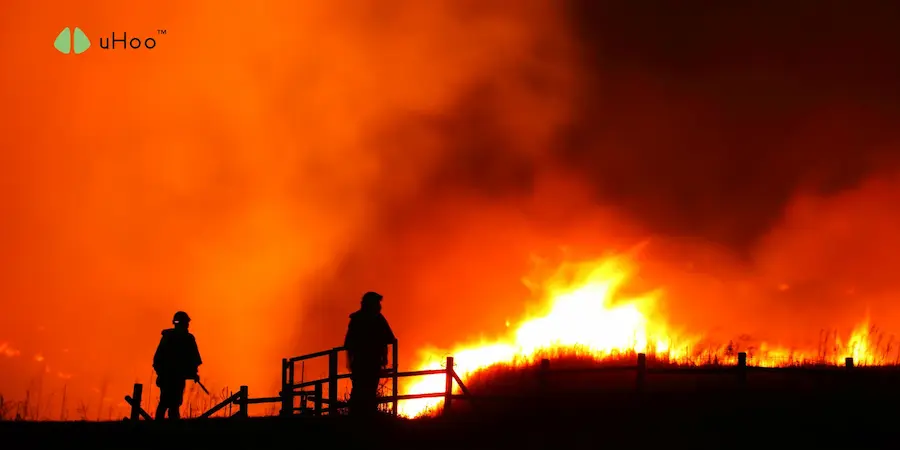When news of a wildfire breaks, the term PM2.5 is often mentioned in air quality reports. For many, it’s just a number or an acronym, but understanding the true nature and danger of wildfire PM2.5 particles is crucial for protecting your health.
Wildfire pm2.5 particles are the single greatest health concern from wildfire smoke, and their silent, invisible nature makes them a formidable threat to anyone living in an affected area.
So, what exactly are wildfire pm2.5 particles? The PM stands for Particulate Matter, and the 2.5 refers to its size: particles that are 2.5 micrometers in diameter or smaller. To put that in perspective, a single strand of human hair is about 70 micrometers thick.
This microscopic size is precisely what makes them so dangerous. They are small enough to be easily inhaled and can bypass the protective hairs and mucus in your nose and throat, traveling deep into your lungs. Once in the lungs, they can cause inflammation and irritation, and the smallest of these particles can even cross into your bloodstream, where they can affect your heart and other organs.
The health effects of inhaling wildfire PM2.5 particles are wide-ranging. In the short term, exposure to wildfire pm2.5 particles can cause eye, nose, and throat irritation, coughing, headaches, and shortness of breath.
For sensitive populations, such as children, the elderly, and those with pre-existing conditions like asthma, COPD, or heart disease, the risks are significantly higher. Wildfire smoke can trigger severe asthma attacks, heart palpitations, and an increased risk of stroke and heart attack. Even healthy individuals can experience reduced lung function and respiratory symptoms during a smoke event.
What’s more, the air inside your home is not a refuge from wildfire pm2.5 particles. Studies have shown that a significant portion of outdoor PM2.5 can infiltrate indoor spaces through various pathways.
They can enter through small cracks and openings in walls and foundations, around doors and windows, and even through your HVAC system if it’s not equipped with a high-efficiency filter. Once indoors, these particles don’t simply disappear; they can linger in the air for hours, making your home a continuous source of exposure.
This is why traditional air quality awareness (i.e. relying on smell or sight) is not enough. You can’t see these particles, and your nose may not be sensitive enough to detect their presence, especially if you’ve been indoors for a while.
To truly protect yourself and your family from wildfire pm2.5 particles, you need a proactive, data-driven approach. A home air quality monitor is an essential tool for understanding the air you breathe. A device like uHoo gives you a clear, real-time picture of your indoor environment. It continuously measures PM2.5 levels, providing an invaluable early warning system when wildfire smoke is infiltrating your home.
By monitoring these microscopic particles, uHoo empowers you to take immediate action, such as closing a small gap, turning on an air purifier, or creating a safe, clean-air room. Understanding the threat is the first step, and with the right tool, you can be prepared to face it head-on.

